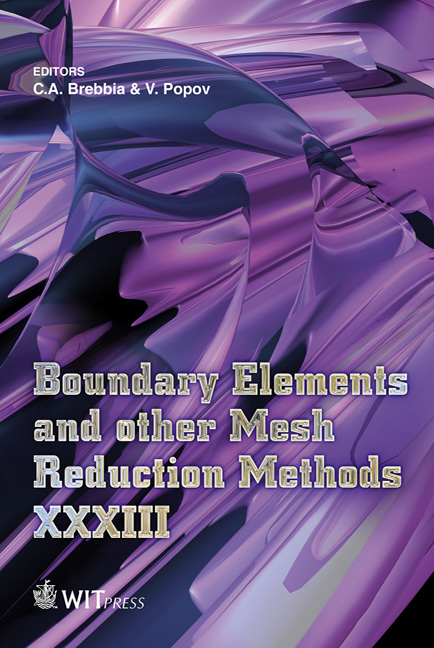The Expedite Boundary Element Method
Price
Free (open access)
Transaction
Volume
52
Pages
12
Page Range
179 - 190
Published
2011
Size
275 kb
Paper DOI
10.2495/BE110161
Copyright
WIT Press
Author(s)
N. A. Dumont & C. A. Aguilar
Abstract
The present developments combine the variationally-based, hybrid boundary element method with a consistent formulation of the conventional, collocation boundary element method in order to establish a computationally less intensive procedure, although not necessarily less accurate, for large-scale, two-dimensional and three-dimensional problems of potential and elasticity, including timedependent phenomena. Both the double-layer and the single-layer potential matrices, H and G, whose evaluation usually requires dealing with singular and improper integrals, are obtained in an expedite way that circumvents almost any numerical integration – except for a few regular integrals in the case of H. A few numerical examples are shown to assess the applicability of the method, its computational effort and some convergence issues. Keywords: boundary elements, meshless methods, hybrid boundary elements. 1 Introduction The collocation boundary element method (CBEM), whenever applicable, is a simple, powerful numerical analysis tool [1]. The present contribution is an attempt to show that the CBEM can be still more efficient and powerful – and still easier to implement computationally. (A not lesser contribution is the demonstration that simplicity can be achieved without resorting to exotic concepts such as node displacements from corner points or regularizations.) Some precursory works have already been published on the subject [9] or are being prepared [11]. However, this is the first attempt to summarize the basic concepts that lead to the expedite boundary element method (EBEM) and to show its main features and possibilities of application in an outline that is meant to be itself expedite.
Keywords
boundary elements, meshless methods, hybrid boundary elements





